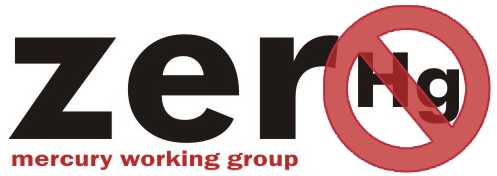The Minamata Convention on Mercury has as it’s objective to protect the human health and the environment from anthropogenic emissions and releases of mercury and mercury compounds.
Mercury has been at the UNEP Governing Council (GC) agenda since its 21st session, in February 2001. The following milestones have been reached since then.
- December 2002 – The Global mercury assessment was finalized.
- February 2003 (Nairobi) - GC 22 – acknowledges there is a global problem with mercury
- February 2005 (Nairobi) - GC decision 23/9 - decided on initial action
- February 2007(Nairobi) - GC decision 24/3 –-current efforts not sufficient, further long-term action required: identified priority areas, set up process towards a global framework
- November 2007 (Bangkok) – First Open Ended Working Group (OEWG1): Reviewed and identified the options
- February 2008 (Monaco) – 10th Special Session of the Governing Council – A progress report from the OEWG 1 was acknowledged and adopted by the governments.
- October 2008 (Nairobi) - OEWG2: Adopted report of findings and recommendations for GC-25 – on a global policy framework and options of measures in each thematic area.
- February 2009 (Nairobi) – GC Decision 25/5 – Decision to develop a global treaty on mercury and to continue and enhance existing work on mercury storage, supply , artisanal small scale gold mining, products and processes, national inventories, awareness raising and information on the sound management of mercury.
In 2009, Decision 25/5 of the Governing Council launched the discussions towards the development of a mercury treaty. OEWG 3 was held on 19-23 October 2009 in Bangkok to advance the work. An Intergovernmental Negotiating Committee (INC) was formed in 2010, to meet 5 times before the treaty text would be agreed by 2013. The Minamata Convention on Mercury was adopted in October 2013 and entered into force on 16 August 2017.
The Zero Mercury Working Group has been following developments and participated to all relevant meetings since 2004. The work, preparations and all documents ZMWG developed and contributed to the meetings since the negotiations started in 2010 can be found can be found below (work related to earlier meetings is available upon request):
- UNEP Hg INC 1, 7-11 June 2010, Stockholm, Sweden
- UNEP Hg INC 2, 24-28 January 2011, Chiba, Japan
- UNEP Hg INC 3, 31 October - 4 November 2011, Nairobi, Kenya
- UNEP Hg INC 4, 27 June - 2nd July, 2012, Punta de l'Este, Uruguay
- UNEP Hg INC 5, 13 - 18 January 2013, Geneva, Switzerland
- UNEP Hg Diplomatic Conference, 7-11 October 2013, Kumamoto-Minamata, Japan
- UNEP Hg INC 6, 3-7 November 2014, Bangkok, Thailand
- UNEP Hg INC 7, 10-15 March 2016, Dead Sea, Jordan
- UN_Environment Minamata Mercury COP1, 24-29 September 2017, Geneva, Switzerland
- UN_Environment Minamata Mercury COP2, 19-23 November 2018, Geneva, Switzerland
- UN_Environment Minamata Mercury COP3, 25-29 November 2019, Geneva, Switzerland
- UN_Environment Minamata Mercury COP4.1, 1-5 November 2021, Virtual Meeting
- UN_Environment Minamata Mercury COP4.2, 21-25 March 2022, Bali, Indonesia
- UN Environment Minamata Mercury COP5, 30 Oct - 03 Nov 2023, Geneva, Switzerland
- UN Environment Minamata Mercury COP6, 03 - 07 Nov 2025, Geneva, Switzerland
In parallel, the ZMWG has been an active member of the Global Mercury Partnership since it was launched in 2005. It served as the co-lead for the Storage and Supply partnership; ZMWG is part of the Partnership Advisory Group and contributes actively to the relevant work supporting the Minamata Convention.
Other relevant fora are being followed since 2005, as relevant e.g. Intergovernmental Forum for Chemical Safety (IFCS) Forum V, the Task Force on Heavy Metals under the Long Range Trounsboundary Air Pollution (UNECE), the International Conference of Mercury as a Global Pollutant 2006, etc.

